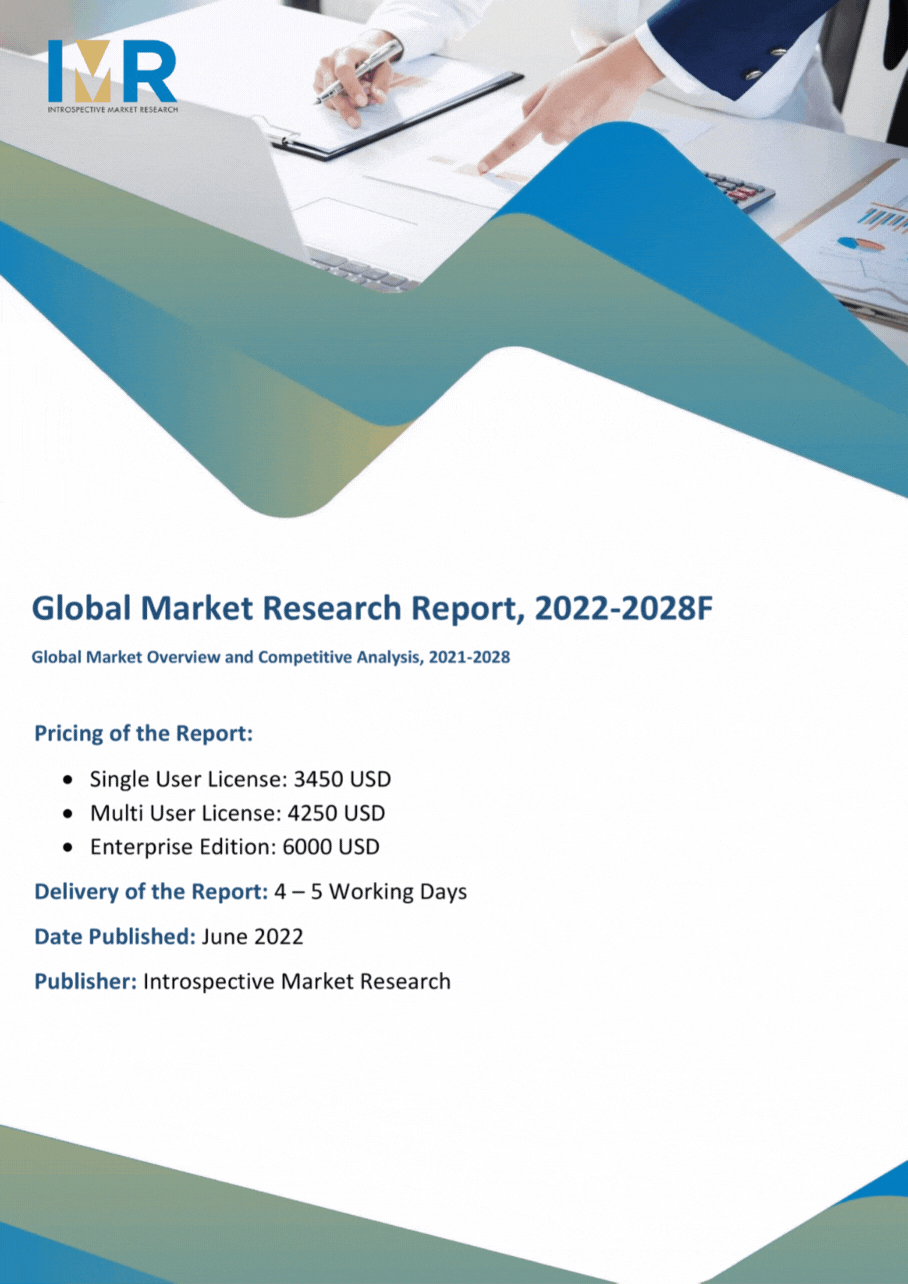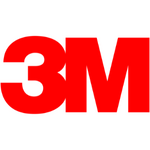Automotive Memory Market Synopsis
Automotive Memory Market Size is Valued at USD 7.19 Billion in 2023, and is Projected to Reach USD 27.05 Billion by 2032, Growing at a CAGR of 18% From 2024-2032.
Automotive memory market in this context can be defined as a part of the overall semiconductor industry that deals with memory products applied in automobiles. The following memory solutions are an essential component for entering, processing and storing data into many car-related applications such as infotainment, ADAS, navigation systems and intracar networks. This trend is more so due to the fact that automobile manufacturers are incorporating more electronics and connectivity functions in modern vehicles and memory solutions that come with faster processing speed, larger storage capabilities and higher reliability are now being sought after.
- The automotive memory market is chiefly led by the advent of the driving assistance systems, information communication, and entertainment systems with in-car networking in today’s automobiles. ADAS which consists of features such as the adaptive cruise control, lane departure warning system, and the automated parking system among others, call for high levels of processing as well as recorded information storage hence increasing the call for automotive memory solutions. The same can be also attributed to features like infotainment systems, which include GPS navigation, multimedia, and connectivity and streaming with Smartphone come with demands for high performance memory in automobiles.
- Also, the increasing use of connected car/ autonomous car is also contributing to the global automotive memory market at a rapid pace. Embedded memory solutions within cars are needed to manage data from numerous sensors, cameras, and communication modules in connected cars as well as to obtain, process, and analyze the real-time data in autonomous cars. Since new car models are being developed with features and components incorporating sophisticated memory technology, this global market for automotive memory solutions is projected to expand in the near future.

Automotive Memory Market Trend Analysis
Memory Lane, Navigating the Automotive Memory Market Trends
- The automotive memory market is witnessing a high growth trajectory, mainly attributable towards the risen utilization of ADAS, infotainment, and EVs. It should also be mentioned that memory plays an extremely important role in ADAS facilities to store and process the data received from sensors, cameras and radar. Technological and safety advancements aimed at cars and their architectures have led to increased demand for automotive memory, especially NAND flash and DRAM, high-performance, as well as reliable ones.
- Rising popularity of electric vehicles can be considered as one of the main factors for the automotive memory market growth. To address battery control, electricity distribution and other necessities including networking in an EV, there is high memory demand. Further, as dependency on self-driving cars increase with time, the EVs will need more RAM to facilitate the mechanical algorithms of autonomy. Given this trend, automotive memory solutions will experience further growth, and automotive makers are under pressure to advance the memory solution technologies suitable for the automotive industry.
Memory Matters, Exploring the Automotive Memory Market
- The automotive memory market is still in the phase of growth, which is made possible by new advanced driver-assistance systems (ADAS), new generation infotainment systems, and in vehicle networking. Due to the nature and function of these technologies, they present high demands in the areas of data storage and data processing. Furthermore, the increasing use and popularity of connected cars and even self-driving cars are presenting additional market drivers for automotive memory since those types of cars require a lot of memory usage for navigation and control, as well as data processing from various sensors used in the car.
- There is a fledgling trend of providing memory solutions that are bespoke to the realm of automobiles and each of the categories detailed above prove this. This also includes Memory modules that hold the ability to be resistant to different environmental conditions, have a high margin of reliability and a high endurance to fail in comparison to lesser automotive quality modules on … The scope to innovate in these areas hold a promising opportunity for the manufacturers to gain a competitive advantage in the marketplace.
- Also, the growth of AI and machine learning technologies in automobiles also influences the need for memory chips for these car systems. These technologies need to operate with large amounts of data that must be processed in real-time, which means that memory solutions with high bandwidths and very low latencies are needed. The firms that can create memory solutions that are tailored for the needs of AI in automotive solutions are likely to benefit from this bubbling market.
Automotive Memory Market Segment Analysis:
Automotive Memory Market Segmented on the basis of type, application, and Vehicle Type.
By Type, DRAM segment is expected to dominate the market during the forecast period
- The automotive memory market can be divided by the various types of memory solutions have become imperative for the proper working of automobiles. SRAM and DRAM are employed for data processing and storage; the latter is applicable for high-speed computations and can be used for ADAS and infotainment subsystems. Flash memory is specifically used for the storage of firmware, maps, and other necessary items that need to be stored for the proper functioning of various systems in the onboard automobiles. Cache memory employs the use of the SRAM where some data are most frequently accessed in the computer system. This type of ROM is called electrically erasable programmable read-only memory (EEPROM,) and it is used for storing small quantities of data that are updated often, it is used to store calibration data for example. Both types of memories are useful in automotive applications and are crucial to maintaining the performance, dependability, and safety of automotive systems, contributing to the automotive memory market’s development and innovation.
By Application, ADAS & Safety System segment held the largest share in 2024
- Automotive memory market has several essential uses in any vehicle as explained below; Multimedia players, navigation systems, and other features of Infotainment systems use memories for storing and processing different kinds of media, map info and other settings. Most automobiles have ADAS and safety systems that rely on memory for the saving sensor details, algorithms or decision-making data that are influential in determining the safety of the vehicle or its occupants. ECUs needed memory for storing the control algorithms, intake of data from sensor and parameters of calibration, to make the engine perform optimally and use the least fuel. Other applications are body control modules, Telematic systems, and connectivity electronic control modules, emphasizing how memory is central to the current automotive design.
Automotive Memory Market Regional Insights:
Asia Pacific is Expected to Dominate the Market Over the Forecast period
- The Asia Pacific region is indeed one of the significant markets for the Automotive Memory Market due to rising vehicle demand, and innovative technology adoption in regions like China, Japan, India, and South Korea. Most sub-sectors within automotive industry are expanding rapidly in the region and include production and sales of both passenger cars and commercial vehicles and electric vehicles (EVs). This growth is paving way for automotive memory for application such as infotainment memory which is DRAM & NAND flash memory for applications such as ADAS & telematics.
- Thanks to the larger population, the availability of cheap capital, and a thirst for the newest gadgets, China, which is the largest automotive market in the region, plays a significant role in the development of the Automotive Memory Market. Electric cars and self-driving technologies have been on the rise in the country, and the burgeoning automotive market has increased the demand for sophisticated memory solutions. It is also important to note that automotive products are also target markets of Micron Technology due to the high demands of Japan and South Korea in the automotive markets and high volumes of automobile manufacturing. Furthermore, the use and expansion of IoT and AI in vehicles are contributing greatly to the need for automotive memory in the region.
Active Key Players in the Automotive Memory Market
- Micron Technology, Inc. (USA)
- SK Hynix (South Korea)
- Samsung Electronics Co., Ltd. (South Korea)
- Western Digital Technologies, Inc. (USA)
- Infineon Technologies AG (Germany)
- Macronix International Co. Ltd. (Taiwan)
- Integrated Silicon Solution, Inc. (USA)
- Renesas Corporation (Japan)
- Qualcomm Technologies, Inc. (USA)
- MediaTek, Inc. (Taiwan)
- Toshiba Corporation (Japan)
- STMicroelectronics N.V. (Switzerland/Netherlands)
- Nanya Technology (Taiwan)
- Texas Instruments Inc. (USA)
- Winbond Electronics Corp. (Taiwan)
- Others
|
Global Automotive Memory Market |
|||
|
Base Year: |
2023 |
Forecast Period: |
2024-2032 |
|
Historical Data: |
2017 to 2023 |
Market Size in 2023: |
USD 36.93 Bn. |
|
Forecast Period 2024-32 CAGR: |
18 % |
Market Size in 2032: |
USD 57.02 Bn. |
|
Segments Covered: |
By Type |
|
|
|
By Application |
|
||
|
By Vehicle Type |
|
||
|
By Region |
|
||
|
Key Market Drivers: |
|
||
|
Key Market Restraints: |
|
||
|
Key Opportunities: |
|
||
|
Companies Covered in the report: |
|
||
Chapter 1: Introduction
1.1 Scope and Coverage
Chapter 2:Executive Summary
Chapter 3: Market Landscape
3.1 Market Dynamics
3.1.1 Drivers
3.1.2 Restraints
3.1.3 Opportunities
3.1.4 Challenges
3.2 Market Trend Analysis
3.3 PESTLE Analysis
3.4 Porter's Five Forces Analysis
3.5 Industry Value Chain Analysis
3.6 Ecosystem
3.7 Regulatory Landscape
3.8 Price Trend Analysis
3.9 Patent Analysis
3.10 Technology Evolution
3.11 Investment Pockets
3.12 Import-Export Analysis
Chapter 4: Automotive Memory Market by Type
4.1 Automotive Memory Market Snapshot and Growth Engine
4.2 Automotive Memory Market Overview
4.3 DRAM
4.3.1 Introduction and Market Overview
4.3.2 Historic and Forecasted Market Size in Value USD and Volume Units (2017-2032F)
4.3.3 Key Market Trends, Growth Factors and Opportunities
4.3.4 DRAM: Geographic Segmentation Analysis
4.4 Flash
4.4.1 Introduction and Market Overview
4.4.2 Historic and Forecasted Market Size in Value USD and Volume Units (2017-2032F)
4.4.3 Key Market Trends, Growth Factors and Opportunities
4.4.4 Flash: Geographic Segmentation Analysis
4.5 SRAM
4.5.1 Introduction and Market Overview
4.5.2 Historic and Forecasted Market Size in Value USD and Volume Units (2017-2032F)
4.5.3 Key Market Trends, Growth Factors and Opportunities
4.5.4 SRAM: Geographic Segmentation Analysis
4.6 EEPROM
4.6.1 Introduction and Market Overview
4.6.2 Historic and Forecasted Market Size in Value USD and Volume Units (2017-2032F)
4.6.3 Key Market Trends, Growth Factors and Opportunities
4.6.4 EEPROM: Geographic Segmentation Analysis
Chapter 5: Automotive Memory Market by Application
5.1 Automotive Memory Market Snapshot and Growth Engine
5.2 Automotive Memory Market Overview
5.3 Infotainment System. ADAS & Safety
5.3.1 Introduction and Market Overview
5.3.2 Historic and Forecasted Market Size in Value USD and Volume Units (2017-2032F)
5.3.3 Key Market Trends, Growth Factors and Opportunities
5.3.4 Infotainment System. ADAS & Safety: Geographic Segmentation Analysis
5.4 System
5.4.1 Introduction and Market Overview
5.4.2 Historic and Forecasted Market Size in Value USD and Volume Units (2017-2032F)
5.4.3 Key Market Trends, Growth Factors and Opportunities
5.4.4 System: Geographic Segmentation Analysis
5.5 Engine Control Unit (ECU)
5.5.1 Introduction and Market Overview
5.5.2 Historic and Forecasted Market Size in Value USD and Volume Units (2017-2032F)
5.5.3 Key Market Trends, Growth Factors and Opportunities
5.5.4 Engine Control Unit (ECU): Geographic Segmentation Analysis
5.6 Others
5.6.1 Introduction and Market Overview
5.6.2 Historic and Forecasted Market Size in Value USD and Volume Units (2017-2032F)
5.6.3 Key Market Trends, Growth Factors and Opportunities
5.6.4 Others: Geographic Segmentation Analysis
Chapter 6: Automotive Memory Market by Vehicle Type
6.1 Automotive Memory Market Snapshot and Growth Engine
6.2 Automotive Memory Market Overview
6.3 Passenger Cars
6.3.1 Introduction and Market Overview
6.3.2 Historic and Forecasted Market Size in Value USD and Volume Units (2017-2032F)
6.3.3 Key Market Trends, Growth Factors and Opportunities
6.3.4 Passenger Cars: Geographic Segmentation Analysis
6.4 Light Commercial Vehicles (LCVs)
6.4.1 Introduction and Market Overview
6.4.2 Historic and Forecasted Market Size in Value USD and Volume Units (2017-2032F)
6.4.3 Key Market Trends, Growth Factors and Opportunities
6.4.4 Light Commercial Vehicles (LCVs): Geographic Segmentation Analysis
6.5 Heavy Commercial Vehicles (HCVs)
6.5.1 Introduction and Market Overview
6.5.2 Historic and Forecasted Market Size in Value USD and Volume Units (2017-2032F)
6.5.3 Key Market Trends, Growth Factors and Opportunities
6.5.4 Heavy Commercial Vehicles (HCVs): Geographic Segmentation Analysis
Chapter 7: Company Profiles and Competitive Analysis
7.1 Competitive Landscape
7.1.1 Competitive Benchmarking
7.1.2 Automotive Memory Market Share by Manufacturer (2023)
7.1.3 Industry BCG Matrix
7.1.4 Heat Map Analysis
7.1.5 Mergers and Acquisitions
7.2 MICRON TECHNOLOGY
7.2.1 Company Overview
7.2.2 Key Executives
7.2.3 Company Snapshot
7.2.4 Role of the Company in the Market
7.2.5 Sustainability and Social Responsibility
7.2.6 Operating Business Segments
7.2.7 Product Portfolio
7.2.8 Business Performance
7.2.9 Key Strategic Moves and Recent Developments
7.2.10 SWOT Analysis
7.3 INC. (USA)
7.4 SK HYNIX (SOUTH KOREA)
7.5 SAMSUNG ELECTRONICS CO.
7.6 LTD. (SOUTH KOREA)
7.7 WESTERN DIGITAL TECHNOLOGIES
7.8 INC. (USA)
7.9 INFINEON TECHNOLOGIES AG (GERMANY)
7.10 MACRONIX INTERNATIONAL CO. LTD. (TAIWAN)
7.11 INTEGRATED SILICON SOLUTION
7.12 INC. (USA)
7.13 RENESAS CORPORATION (JAPAN)
7.14 QUALCOMM TECHNOLOGIES
7.15 INC. (USA)
7.16 MEDIATEK
7.17 INC. (TAIWAN)
7.18 TOSHIBA CORPORATION (JAPAN)
7.19 STMICROELECTRONICS N.V. (SWITZERLAND/NETHERLANDS)
7.20 NANYA TECHNOLOGY (TAIWAN)
7.21 TEXAS INSTRUMENTS INC. (USA)
7.22 WINBOND ELECTRONICS CORP. (TAIWAN AND OTHER MAJOR PLAYERS
Chapter 8: Global Automotive Memory Market By Region
8.1 Overview
8.2. North America Automotive Memory Market
8.2.1 Key Market Trends, Growth Factors and Opportunities
8.2.2 Top Key Companies
8.2.3 Historic and Forecasted Market Size by Segments
8.2.4 Historic and Forecasted Market Size By Type
8.2.4.1 DRAM
8.2.4.2 Flash
8.2.4.3 SRAM
8.2.4.4 EEPROM
8.2.5 Historic and Forecasted Market Size By Application
8.2.5.1 Infotainment System. ADAS & Safety
8.2.5.2 System
8.2.5.3 Engine Control Unit (ECU)
8.2.5.4 Others
8.2.6 Historic and Forecasted Market Size By Vehicle Type
8.2.6.1 Passenger Cars
8.2.6.2 Light Commercial Vehicles (LCVs)
8.2.6.3 Heavy Commercial Vehicles (HCVs)
8.2.7 Historic and Forecast Market Size by Country
8.2.7.1 US
8.2.7.2 Canada
8.2.7.3 Mexico
8.3. Eastern Europe Automotive Memory Market
8.3.1 Key Market Trends, Growth Factors and Opportunities
8.3.2 Top Key Companies
8.3.3 Historic and Forecasted Market Size by Segments
8.3.4 Historic and Forecasted Market Size By Type
8.3.4.1 DRAM
8.3.4.2 Flash
8.3.4.3 SRAM
8.3.4.4 EEPROM
8.3.5 Historic and Forecasted Market Size By Application
8.3.5.1 Infotainment System. ADAS & Safety
8.3.5.2 System
8.3.5.3 Engine Control Unit (ECU)
8.3.5.4 Others
8.3.6 Historic and Forecasted Market Size By Vehicle Type
8.3.6.1 Passenger Cars
8.3.6.2 Light Commercial Vehicles (LCVs)
8.3.6.3 Heavy Commercial Vehicles (HCVs)
8.3.7 Historic and Forecast Market Size by Country
8.3.7.1 Bulgaria
8.3.7.2 The Czech Republic
8.3.7.3 Hungary
8.3.7.4 Poland
8.3.7.5 Romania
8.3.7.6 Rest of Eastern Europe
8.4. Western Europe Automotive Memory Market
8.4.1 Key Market Trends, Growth Factors and Opportunities
8.4.2 Top Key Companies
8.4.3 Historic and Forecasted Market Size by Segments
8.4.4 Historic and Forecasted Market Size By Type
8.4.4.1 DRAM
8.4.4.2 Flash
8.4.4.3 SRAM
8.4.4.4 EEPROM
8.4.5 Historic and Forecasted Market Size By Application
8.4.5.1 Infotainment System. ADAS & Safety
8.4.5.2 System
8.4.5.3 Engine Control Unit (ECU)
8.4.5.4 Others
8.4.6 Historic and Forecasted Market Size By Vehicle Type
8.4.6.1 Passenger Cars
8.4.6.2 Light Commercial Vehicles (LCVs)
8.4.6.3 Heavy Commercial Vehicles (HCVs)
8.4.7 Historic and Forecast Market Size by Country
8.4.7.1 Germany
8.4.7.2 UK
8.4.7.3 France
8.4.7.4 Netherlands
8.4.7.5 Italy
8.4.7.6 Russia
8.4.7.7 Spain
8.4.7.8 Rest of Western Europe
8.5. Asia Pacific Automotive Memory Market
8.5.1 Key Market Trends, Growth Factors and Opportunities
8.5.2 Top Key Companies
8.5.3 Historic and Forecasted Market Size by Segments
8.5.4 Historic and Forecasted Market Size By Type
8.5.4.1 DRAM
8.5.4.2 Flash
8.5.4.3 SRAM
8.5.4.4 EEPROM
8.5.5 Historic and Forecasted Market Size By Application
8.5.5.1 Infotainment System. ADAS & Safety
8.5.5.2 System
8.5.5.3 Engine Control Unit (ECU)
8.5.5.4 Others
8.5.6 Historic and Forecasted Market Size By Vehicle Type
8.5.6.1 Passenger Cars
8.5.6.2 Light Commercial Vehicles (LCVs)
8.5.6.3 Heavy Commercial Vehicles (HCVs)
8.5.7 Historic and Forecast Market Size by Country
8.5.7.1 China
8.5.7.2 India
8.5.7.3 Japan
8.5.7.4 South Korea
8.5.7.5 Malaysia
8.5.7.6 Thailand
8.5.7.7 Vietnam
8.5.7.8 The Philippines
8.5.7.9 Australia
8.5.7.10 New Zealand
8.5.7.11 Rest of APAC
8.6. Middle East & Africa Automotive Memory Market
8.6.1 Key Market Trends, Growth Factors and Opportunities
8.6.2 Top Key Companies
8.6.3 Historic and Forecasted Market Size by Segments
8.6.4 Historic and Forecasted Market Size By Type
8.6.4.1 DRAM
8.6.4.2 Flash
8.6.4.3 SRAM
8.6.4.4 EEPROM
8.6.5 Historic and Forecasted Market Size By Application
8.6.5.1 Infotainment System. ADAS & Safety
8.6.5.2 System
8.6.5.3 Engine Control Unit (ECU)
8.6.5.4 Others
8.6.6 Historic and Forecasted Market Size By Vehicle Type
8.6.6.1 Passenger Cars
8.6.6.2 Light Commercial Vehicles (LCVs)
8.6.6.3 Heavy Commercial Vehicles (HCVs)
8.6.7 Historic and Forecast Market Size by Country
8.6.7.1 Turkey
8.6.7.2 Bahrain
8.6.7.3 Kuwait
8.6.7.4 Saudi Arabia
8.6.7.5 Qatar
8.6.7.6 UAE
8.6.7.7 Israel
8.6.7.8 South Africa
8.7. South America Automotive Memory Market
8.7.1 Key Market Trends, Growth Factors and Opportunities
8.7.2 Top Key Companies
8.7.3 Historic and Forecasted Market Size by Segments
8.7.4 Historic and Forecasted Market Size By Type
8.7.4.1 DRAM
8.7.4.2 Flash
8.7.4.3 SRAM
8.7.4.4 EEPROM
8.7.5 Historic and Forecasted Market Size By Application
8.7.5.1 Infotainment System. ADAS & Safety
8.7.5.2 System
8.7.5.3 Engine Control Unit (ECU)
8.7.5.4 Others
8.7.6 Historic and Forecasted Market Size By Vehicle Type
8.7.6.1 Passenger Cars
8.7.6.2 Light Commercial Vehicles (LCVs)
8.7.6.3 Heavy Commercial Vehicles (HCVs)
8.7.7 Historic and Forecast Market Size by Country
8.7.7.1 Brazil
8.7.7.2 Argentina
8.7.7.3 Rest of SA
Chapter 9 Analyst Viewpoint and Conclusion
9.1 Recommendations and Concluding Analysis
9.2 Potential Market Strategies
Chapter 10 Research Methodology
10.1 Research Process
10.2 Primary Research
10.3 Secondary Research
|
Global Automotive Memory Market |
|||
|
Base Year: |
2023 |
Forecast Period: |
2024-2032 |
|
Historical Data: |
2017 to 2023 |
Market Size in 2023: |
USD 36.93 Bn. |
|
Forecast Period 2024-32 CAGR: |
18 % |
Market Size in 2032: |
USD 57.02 Bn. |
|
Segments Covered: |
By Type |
|
|
|
By Application |
|
||
|
By Vehicle Type |
|
||
|
By Region |
|
||
|
Key Market Drivers: |
|
||
|
Key Market Restraints: |
|
||
|
Key Opportunities: |
|
||
|
Companies Covered in the report: |
|
||
Frequently Asked Questions :
The forecast period in the Automotive Memory Market research report is 2024-2032.
Micron Technology, Inc. (USA), SK Hynix (South Korea), Samsung Electronics Co., Ltd. (South Korea), Western Digital Technologies, Inc. (USA), Infineon Technologies AG (Germany), Macronix International Co. Ltd. (Taiwan), Integrated Silicon Solution, Inc. (USA), Renesas Corporation (Japan), Qualcomm Technologies, Inc. (USA), MediaTek, Inc. (Taiwan), Toshiba Corporation (Japan), STMicroelectronics N.V. (Switzerland/Netherlands), Nanya Technology (Taiwan), Texas Instruments Inc. (USA), Winbond Electronics Corp. (Taiwan and Other Major Players.
The Automotive Memory Market is segmented into by Type (DRAM, Flash, SRAM, EEPROM), By Application (Infotainment System. ADAS & Safety, System, Engine Control Unit (ECU), Others), Vehicle Type (Passenger Cars, Light Commercial Vehicles (LCVs), Heavy Commercial Vehicles (HCVs)). By region, it is analyzed across North America (U.S.; Canada; Mexico), Eastern Europe (Bulgaria; The Czech Republic; Hungary; Poland; Romania; Rest of Eastern Europe), Western Europe (Germany; UK; France; Netherlands; Italy; Russia; Spain; Rest of Western Europe), Asia-Pacific (China; India; Japan; Southeast Asia, etc.), South America (Brazil; Argentina, etc.), Middle East & Africa (Saudi Arabia; South Africa, etc.).
Automotive memory market in this context can be defined as a part of the overall semiconductor industry that deals with memory products applied in automobiles. The following memory solutions are an essential component for entering, processing and storing data into many car-related applications such as infotainment, ADAS, navigation systems and intracar networks. This trend is more so due to the fact that automobile manufacturers are incorporating more electronics and connectivity functions in modern vehicles and memory solutions that come with faster processing speed, larger storage capabilities and higher reliability are now being sought after.
Automotive Memory Market Size is Valued at USD 7.19 Billion in 2023, and is Projected to Reach USD 27.05 Billion by 2032, Growing at a CAGR of 18% From 2024-2032.


































